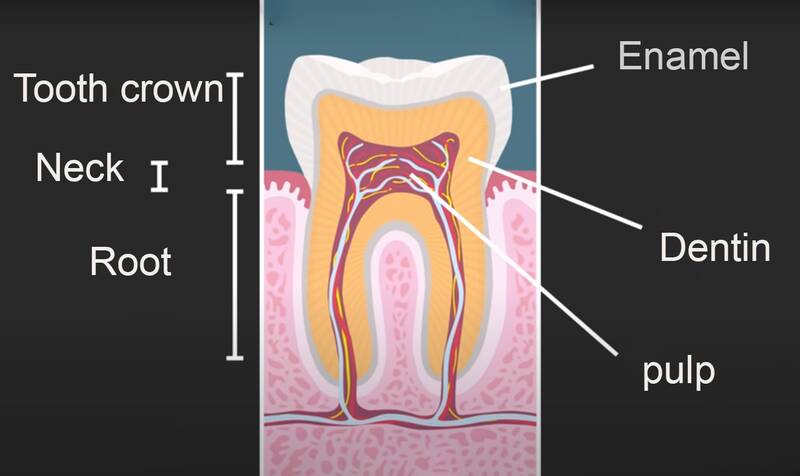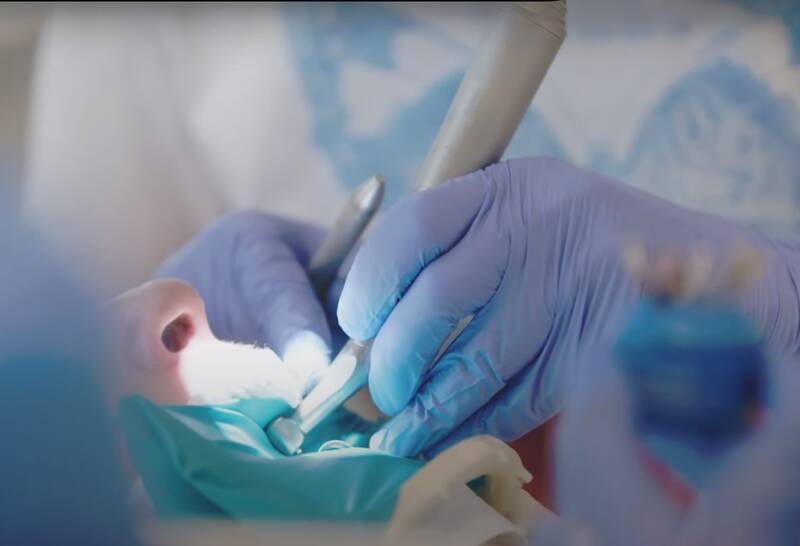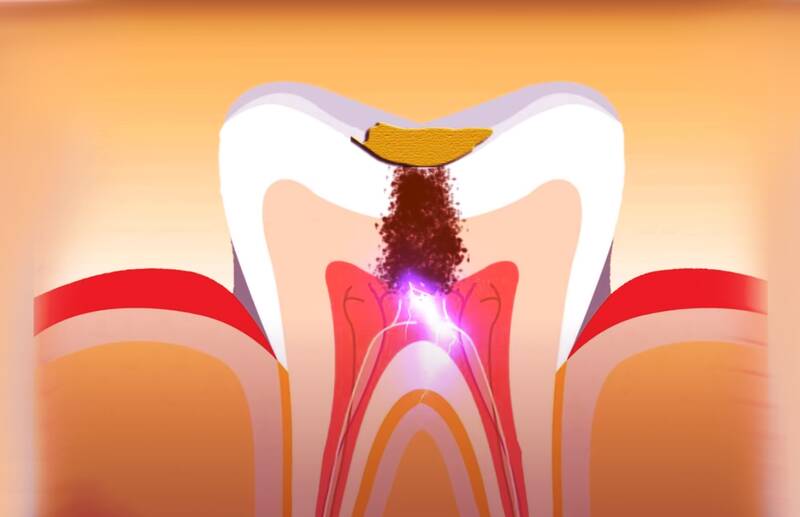Good oral hygiene is essential to maintaining optimal dental health, and pulpal debridement is one of the most crucial procedures to eliminate pain and deflate abscesses quickly. Let’s take a look at it all together in this article.
I. What is pulpal debridement
Pulpal debridement is a procedure that is performed to relieve severe pain before a normal root canal.
This procedure involves opening the tooth and removing infected tissue to relieve pressure and pain.
Pulpal debridement involves creating an opening in the affected tooth to perform a sort of cleaning of the inflamed tissues and nerves of the dental pulp.
This inflammation can be caused by severe decay, as well as by many dental procedures on a tooth or a crack in the tooth itself.
The endodontist will remove some of the infected pulp, giving the remaining tissue room to swell.
This relieves some of the pain, allowing the root canal patient to wait longer before having the full procedure performed.
Although pulpal debridement can significantly reduce the pain of an infected tooth, it should never be considered a substitute for root canal treatment. Patients who have undergone this procedure must again remove the remaining infected tissue and seal the tooth.
Pulpal debridement can even be considered the first step in a root canal, which requires the removal of all pulp and filling of the tooth with an inert substance.
II. Pulpal debridement vs. Root canal treatment
Pulpal debridement is a temporary procedure before performing a definitive root canal treatment. It is done primarily to relieve the patient of pain due to inflammation of the dentin, vessels, and tissues.
While root canal treatment is a definitive procedure that aims to clean all the root canals of the pulp and its components, including the various tissues and blood vessels.
The pulp tissue is made up of blood vessels, connective tissue, and nerve cells, which explains why a problem in this part of the tooth can cause very intense pain.
Next, the tooth is filled with an inert, biocompatible material. Finally, adhesive cement is used to seal the opening of the tooth, preventing future infection.
To make the tooth more protected and completely safe from re-infection, a crown or other type of restoration is usually needed.
The restoration can be done in several ways: with crowns made of traditional materials (gold, silver) or with dental replicas made of high-tech material in the color of the tooth.
III. Steps of pulpal debridement
There are no specific steps for a pulpal debridement. Usually, the patient arrives with pain or inflammation caused by an infection inside the tooth (dentin).
The dentist then acts in an emergency while waiting to schedule a root canal treatment, which is a real and long procedure that must be prepared in advance by doing dental examinations and radiology. Because he needs to know the number of canals in the tooth, and the depth and length of each canal in the tooth.
As for pulpal debridement, the dentist, after anesthetizing the treatment area, will make a small hole in the infected tooth and will clean with his instruments all the dental pulp from necrotic tissues and infected nerves. Then he will fill the hole with suitable cement until the root canal is completely treated.

IV. How long does a pulpal debridement last?
It depends on the location of the tooth and the degree of infection. But we can say that generally, the procedure takes at most 45 minutes or less.
The dentist will always try to free the patient as much as possible while controlling his work.
V. Pulpal debridement vs. pulpectomy vs. pulpotomy
These are three specialized names for the repair of the infected dental pulp. We will try to clarify the three terminologies and give each one its own properties.
# Pulpal debridement:
First of all, pulpal debridement: is an emergency removal, as we have just seen throughout the article, of the infected nerve tissue to get rid of the dentin inflammation quickly and relieve the pain. This procedure is usually performed on a tooth in preparation for subsequent root canal treatment.
Debridement is for adult patients who have a tooth abscess or trauma to the tooth that is severe enough. And because the root canals must be cleaned when the subject is healthy and after examining the tooth first, the dentist resorts to debridement which is a superficial cleaning of the tooth.
# Pulpotomy
Pulpotomy is a treatment frequently performed in pediatric dentistry. It is a procedure that is performed on baby teeth when cavities have spread beyond the tooth cavity but there is no root damage.
It can also be performed when there is pulp exposure following a blow to the tooth.
In conclusion, a pulpotomy is performed when it is found, thanks to X-rays, that the decay is very close to the dental nerve pulp or even directly in contact with it. It consists of cleaning and decontaminating the cavity and partially removing the pulp or part of the affected nerve. This treatment can be performed on both temporary and permanent dentition.
# Pulpectomy
And finally Pulpectomy: This is a procedure that goes beyond pulpotomy and could be considered as a root canal treatment usually performed on a baby tooth. It consists of removing the pulp from both the crown and the roots, in case the pulpotomy is insufficient.
In summary, pulpectomy is performed in cases where the decay is very deep and has significantly affected the vital part of the tooth, the pulp, and the nerve channels. It is a little more radical than pulpotomy since it consists in completely amputating the dental nerve.
VI. Root canal vs. pulpectomy
A pulpectomy is the surgical removal of the entire pulp from the crown and roots. The tooth is then filled with a biocompatible material that is absorbed by the body.
A pulpectomy is frequently performed on children’s teeth.
Root canal therapy can be considered a type of pulpectomy at first, but the root canals of the tooth will then be permanently filled and a crown will be placed on the tooth to protect the inside of the treated tooth.
Root canal treatment is frequently performed on permanent teeth.
VII. Cost of pulpal debridement
The price is generally between $100 and $400 for the pulp debridement procedure, which, it should be remembered, is an emergency treatment.
The variation in price is due to the location of the dental office, the location of the tooth, and the insurance coverage one has.
VIII. Recovery from pulpal debridement
The patient recovers in just a few days after a pulpal debridement with less pain after leaving the dental office.
Abscesses usually disappear within a few days due to the removal of the infected parts in the pulp.
IX. Pain after pulpal debridement
Normally pain disappears right after pulpal debridement and if it persists, it is most likely that tissue and nerves have remained infected inside the tooth.
If the pain does not go away after two days, it is advisable to return to your dentist. He is the only one who can tell where the pain is coming from, because it can also come from another part of the teeth, and only he can tell which part is the source of pain by taking x-rays of the patient’s teeth.

X. Why have a root canal and how do I proceed?
Root canal treatments are usually performed in stages. The pulp and nerve are removed in one session. A second session is usually devoted to sealing the cavity to prevent further infection.
Here are the different steps of the procedure:
Diagnosis: To diagnose the problem, your dentist will need to take an x-ray. This will determine the severity of the infection and whether the tooth should be extracted or treated.
Anesthesia: The first step in the procedure is to numb the tooth and surrounding gums. You may need up to three separate injections to ensure that you feel no pain during treatment. The dentist will also place a rubber sheet around your tooth to keep it dry.
Drilling: The dentist makes a hole in the tooth, commonly called a drill, to access the internal structures of your tooth.
Removal: The dentist uses a specialized set of tools to remove the nerve and pulp through the drilled hole. Once the infection is completely removed, the dentist will apply a temporary filling.
Final step: The final step of a root canal treatment is usually the final filling of the tooth and the application of a permanent crown.

